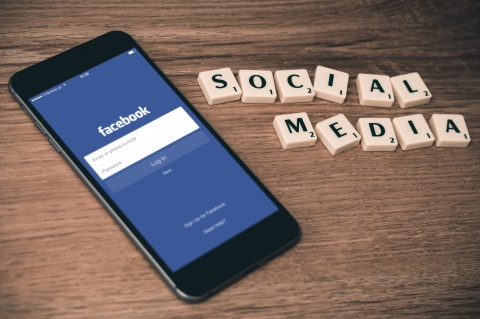Social media can be an incredibly powerful networking and marketing tool for businesses, if you know how to use it correctly. The key to unlocking social media’s potential is understanding the strengths and weaknesses of each of the major platforms (Facebook, Twitter, LinkedIn, etc.) and how they can be used to meet your business’ specific goals. If you’re new to social media or are having trouble understanding how the different platforms are best used, we’ve put together a basic overview of the five biggest social media sites and how they are best used.

Facebook’s biggest advantage is that it is by far the largest social media site; as of June 2013, Facebook had 1.9 billion monthly active users. In addition to its size, Facebook’s audience is also very diverse: 55% of users are women, and 65% are over the age of 45. Whether your audience is local, nationwide, or international (80% of Facebook users live outside the U.S. or Canada), having a Facebook page is likely to give businesses an online presence that will reach their target audience.[i]
More importantly, Facebook has a wide variety of tools (business pages, events, groups) that are designed to help businesses communicate and engage with customers and potential customers. As such, Facebook’s follower to customer ratio is fairly high:
- 59% of users who “like” a business page do so because they have used one or more of their products or services
- 45% are looking for additional information or special deals.
The key to using Facebook is twofold: 1) Engaging and responding, and 2) Moderation. Facebook users want to feel like they are part of a conversation with the businesses they follow, not just a passive audience having unfiltered content dumped into their feeds. When deciding what content to post to your Facebook page, the most important question to ask is, “what kind of information do our customers want?” not “what will get the most likes and shares?” Scheduling is also an important part of good Facebook strategy; limiting posts to one or two a day (at most) gives followers a chance to keep up with your page, and also lets account managers devote time to responding to customer inquiries and comments.
For Facebook, the most important question to ask is, "what kind of information do our customers want?"
Google+
It’s easy to look at Google+ as Facebook’s less impressive sibling, the Frank Stallone to Facebook’s Sylvester. The two sites are very similar, and Google+’s user base of 300 million is a fraction of Facebook’s monthly audience. But despite first appearances, Google+ has several advantages that some businesses could find very useful.
The first notable thing about Google+ is its user base. Where Facebook appeals to a mass audience made up of all demographics, Google+’s audience is believed to be largely male (70%), and tends to be more educated and specialized in their interests. The majority of Google+ users are students, followed by people in STEM and technology fields (web developers, engineers, and designers) and photographers. While this does limit the exposure having a Google+ page creates compared to Facebook, it also gives businesses who cater to those audiences a more direct line of engagement, and makes it easier for business owners to build relationships with knowledgeable and influential people.[ii]
Another advantage of using Google+ is a fairly new feature to the site, interactive posts, which allow users to embed clickable calls to action to their posts. There are dozens of interactive post commands, ranging from adding an event to downloading an app to automatically pinning a picture to a Pinterest page. Chances are there’s at least one type of interactive post will be useful to you, no matter what kind of business you run.

Unlike Google+ and Facebook, Twitter lacks a lot of the broad functionality often associated with social media sites. Posts are limited to just 140 characters, and there are no events or groups pages. But what Twitter lacks in those areas it makes up for in speed of communication, responsiveness, and providing businesses with the ability to build their brand presence online.
Twitter’s low character limit is both its biggest advantage and its biggest limitation. It makes the site great for sharing links and for posting quick updates, but not so great for anything else. If your company has a blog or is advertising a special on its products, posting a link on Twitter with a snappy, eye-catching description can be a great way to get that information shared and seen by lots of people in a relatively short amount of time. Twitter’s simple feed layout, easy “retweet” sharing, and searchable hashtag (#) function make it arguably the best social media site for disseminating information to as broad an audience as possible; when you hear news stories about something that “went viral,” chances are it happened on Twitter.
LinkedIn is strictly business, in more ways than one. Where Facebook, Google+, and Twitter are used for socializing as much as they are for advertising, LinkedIn’s sole focus is networking and advertising for businesses and professionals.
If you’re a B2B business, having a LinkedIn page is essential. In fact, LinkedIn’s conversion rate for B2B leads is nearly three times higher than the conversion rate for Facebook or Twitter. The site has over 238 million users, recorded 5.7 billion professional searches in 2012 alone, and has 78 million unique searches every month. What’s more, it’s growing: according to one study, two new people sign up for LinkedIn every second. In addition to being able to post status updates and link to pages on their websites, businesses on LinkedIn can also use “spotlight” feature to advertise specific products and services, solicit endorsements and recommendations from other businesses and industry professionals, and use the “groups” feature to join discussions with other professionals and business leaders.
The site is also an essential source for people looking to connect with other professionals or recruit new talent; in addition to its more than 3 million business pages, LinkedIn is also home to tens of millions of user profile pages, which professionals and job seekers use to advertise their talents and make connections with other people in their industries.[iii]
Instagram is a different manner of beast than any of the other social media sites listed above. While Facebook, Google+, and Twitter all let users upload and share pictures and videos, visual content is far from their only focus. Instagram, on the other hand, is all about visual content, to the exclusion of just about everything else. While that does limit the site’s usefulness to a very specific type of audience engagement, the type of interactions that take place on Instagram are very brand and business friendly. Of the most-used hashtags on Instagram, a full 70% are brand related.[iv] What’s more, Instagram’s user base is growing at an exponential rate. In September, 2013, Instagram had 130 million users. Just two years later in September, 2015, that number had nearly quadrupled to 400 million users.[v] Likewise, the average number of engagements per individual post is trending upward.
There are two main ways businesses can use Instagram. The first is to post pictures of their products and mark them with appropriate hashtags in order to draw the user base’s attention. The second is to use the site as a storytelling medium to give the audience a view into the life of the company. If a business doesn’t offer products that can be photographed or that make for visually engaging content, they can still make good use of Instagram by posting photos and videos that detail their business processes, introduce staff members, or otherwise build their brand image. Perhaps more than any other social media site, Instagram allows businesses to create the impression of a casual, personal relationship between themselves and their online followers, which can then be leveraged into increasing brand awareness and loyalty.
Making the Choice
Now that you know the basic strengths and weaknesses of the four main social media platforms, think about what you want to achieve with your business’ social media presence. Ask yourself:
- Are you looking to connect with consumers and build a loyal online following?
- Are you trying to increase traffic to your company blog?
- Or do you want to build a reliable rolodex of industry insiders and fellow business leaders?
Once you have a firm goal (or goals) in mind, consider which social media platform(s) is best for achieving that goal, and how much time you have to devote to managing your social media presence. Signing up for a basic social media account is free, but that doesn’t mean you don’t have to invest time and effort into building a reliable online presence and crafting the best content to share with your chosen audience. If you don’t have the time to manage multiple social media accounts, focus on the one site that will give you the best return.

